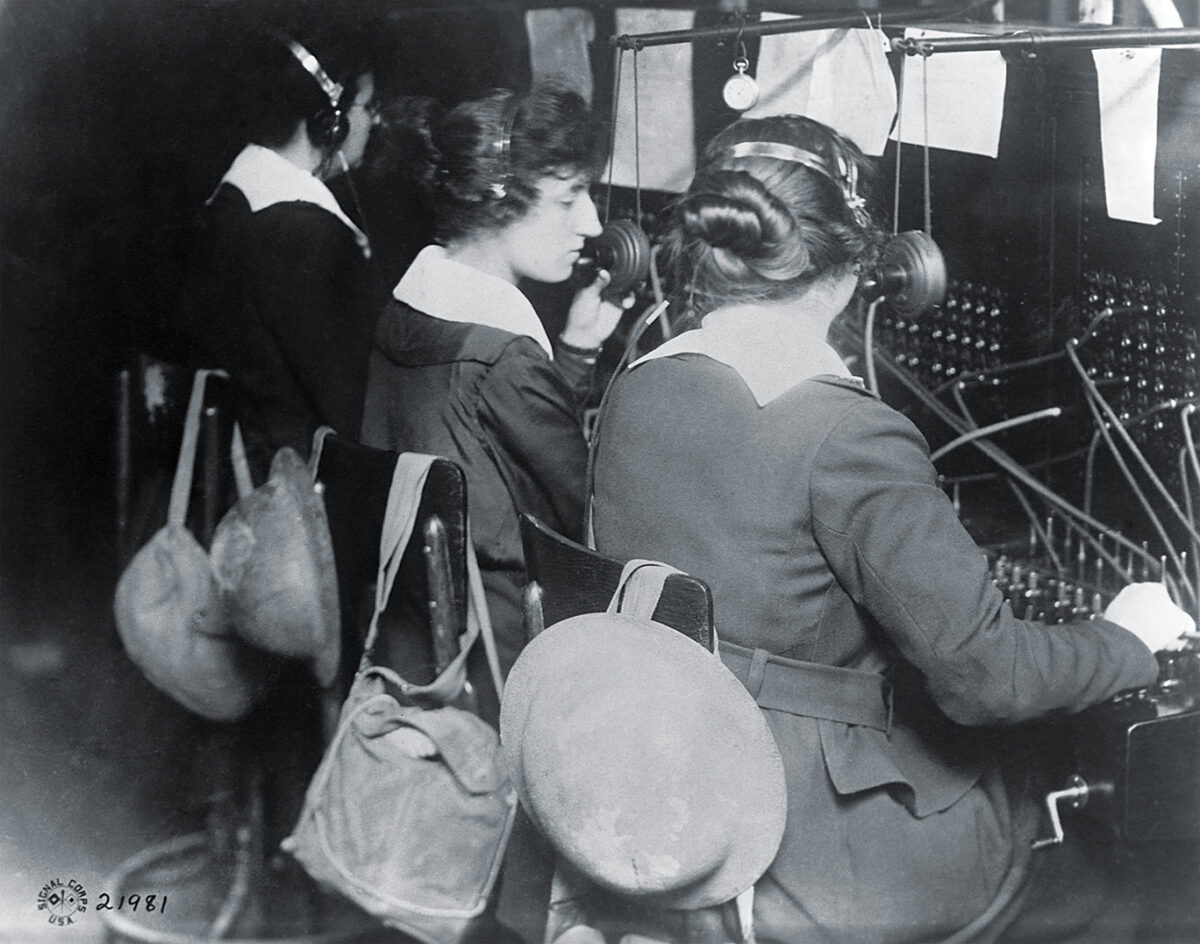The ‘Hello Girls’ Arrived In Europe Before The First Doughboys. Here’s Why They Were So Crucial
Published: 23 July 2023
By Dave Kindy
via the HISTORYNET web site

Signal Corps Telephone Operators
Telephone operators working with the U.S. Signal Corps work at a switchboard in American military headquarters at St.-Mihiel, France. Gas masks and helmets hang at the ready in case of German shelling or gas attacks. Their efficiency and bravery contributed greatly to the effort to capture St.-Mihiel.
It took more than half a century for the women to be recognized as veterans.

Elizabeth Cobbs. (Randy Glass Studio)
With her book The Hello Girls and a follow-up documentary film, historian, commentator and author Elizabeth Cobbs set out to recognize the women who served in the U.S. Army Signal Corps’ Female Telephone Operators Unit during World War I. Members of the unit, many of whom worked Stateside as switchboard operators, maintained communications on the Western Front under spartan and sometimes hazardous conditions. Despite having served in uniform, however, the Hello Girls were denied veteran status. Though Congress remedied that in 1977, many of them had died by then. Recently lawmakers introduced legislation to formally honor the unit with the Congressional Gold Medal, presented for distinguished achievements that have had a major impact on American his-tory and culture. Past recipients include notable American warriors and military units. Cobbs recently spoke with Military History about her book and why the Hello Girls are deserving of recognition.
Who Were The ‘Hello Girls’?
They were a group of 223 young women—some in their teens, most in their 20s and a few “old women” in their 30s—who volunteered at the request of the U.S. Army to go to France and run the telephone system. This was a daring thing. Most soldiers hadn’t even gone yet. These women were in logistics. The Army needed telephone operators over there before the majority of doughboys. They had to facilitate what was happening at the front, to get supplies, to get troops shipped here and there. Some served as long as two years. These women fielded 26 million calls for the Army in France. A handful traveled with General [John J.] Pershing during the big battles of Meuse-Argonne and Saint-Mihiel. Others served at the headquarters of the American First Army, which was close to the front but not in the war zone. They came from all over—from Washington state, down to Louisiana, up to Maine, even Canada. There were some French-Canadian women who volunteered and served with the U.S. Army.
Many Served Close To Or On The Front Lines. Were Any Killed Or Wounded?
None were killed in action, but some did suffer permanent injuries, mostly from tuberculosis, which was common in northern France. Two died from the influenza pandemic, one on Armistice Day, Nov. 11, 1918.
The conditions of World War I were pretty difficult, especially related to the weather these women had to endure in fairly exposed accommodations. Some were under bombardment. Some were in buildings where artillery concussions blew out windows. Once, they were told to evacuate but wouldn’t leave until the soldiers had. These women worked around the clock, especially the supervisors. Chief Operator Grace Banker, who led the first unit, recorded in her diary at the start of an offensive, “I slept two hours today.” They were handling incredibly complex logistical problems near the front lines. They got no breaks; they worked seven days a week, 12-hour shifts for several months during the worst part of the American war effort. It was extremely stressful. Some were close enough to the front lines that their switchboards shook during bombardments.
Of course, these women crossed the ocean to get to Europe in the first place. This was a time when troopships were being sunk. All of these women knew about this, and they were constantly told to use their lifejackets as pillows and wear all of their clothes to bed in case they were torpedoed. It was scary.
Read the entire article on the HISTORYNET web site here:
External Web Site Notice: This page contains information directly presented from an external source. The terms and conditions of this page may not be the same as those of this website. Click here to read the full disclaimer notice for external web sites. Thank you.



